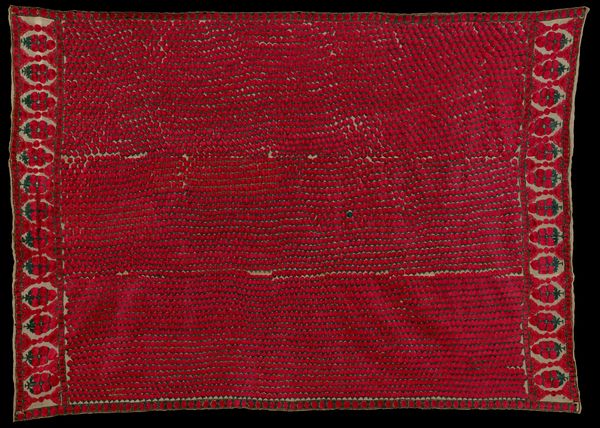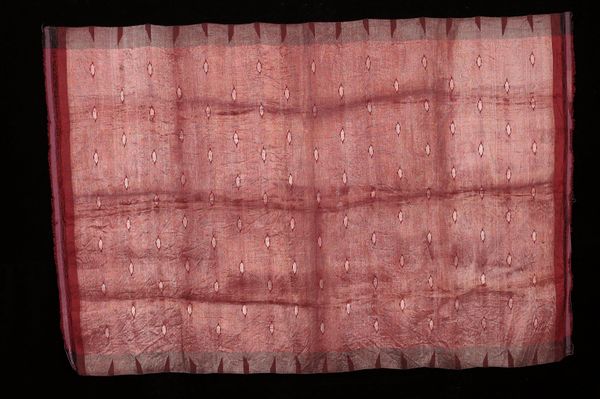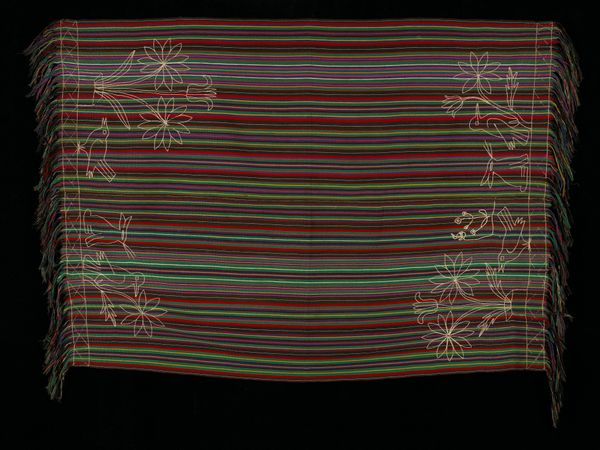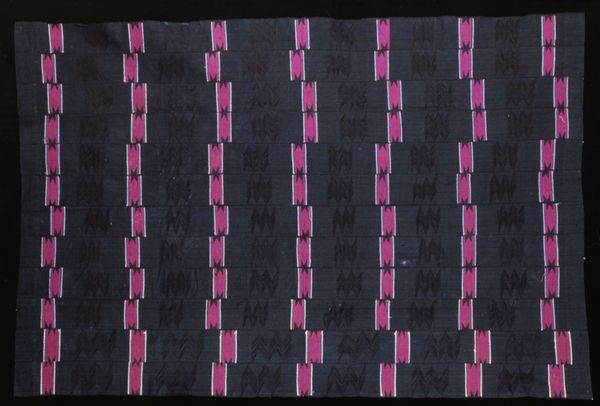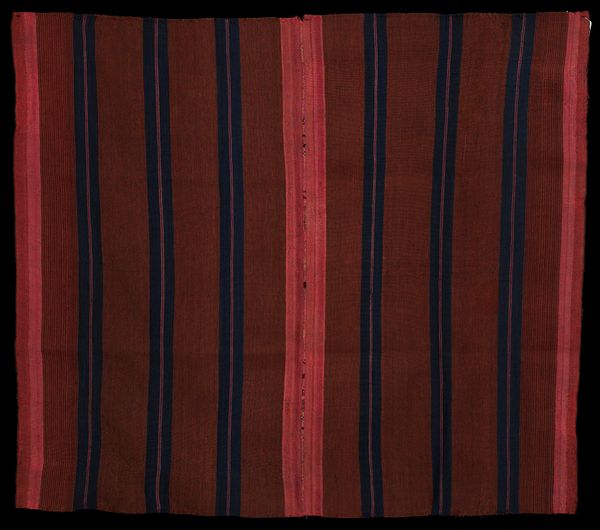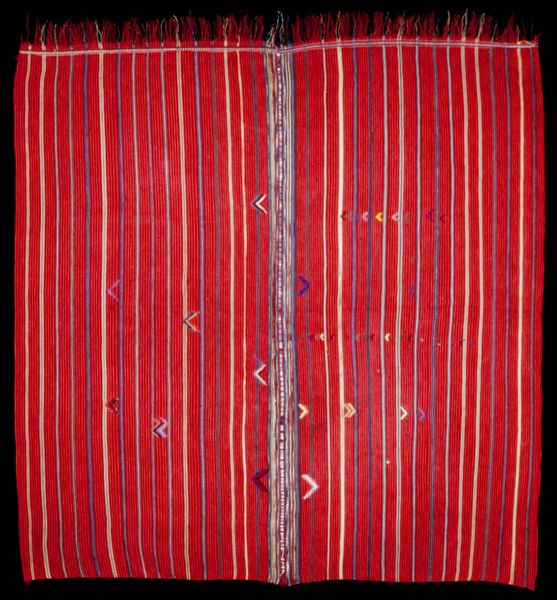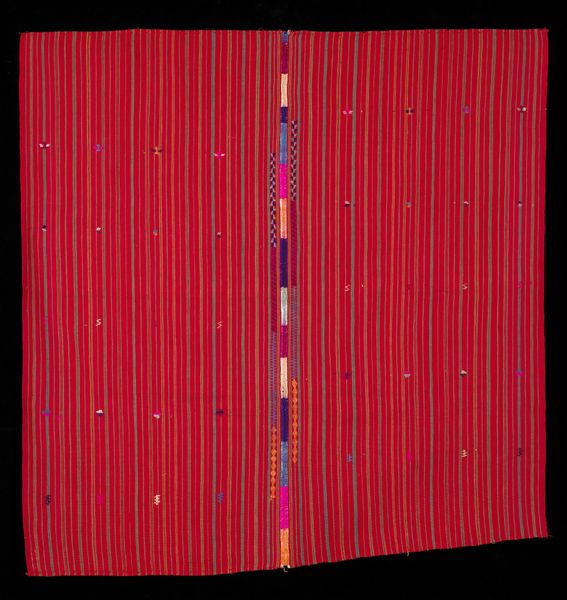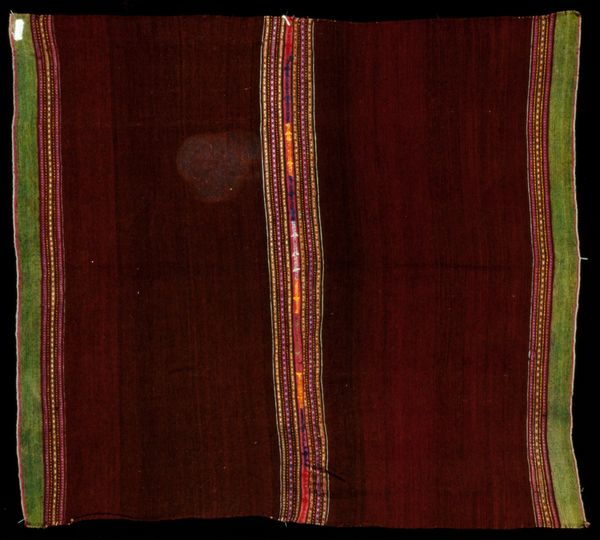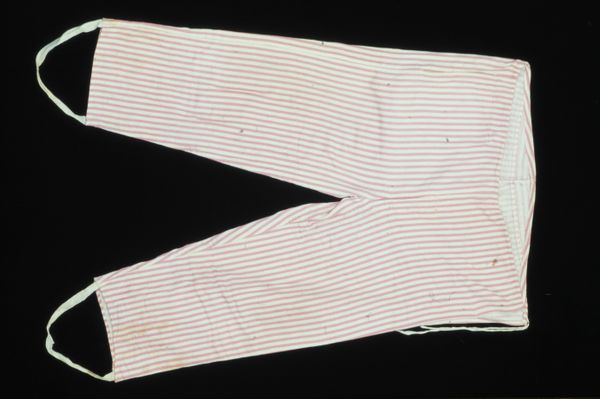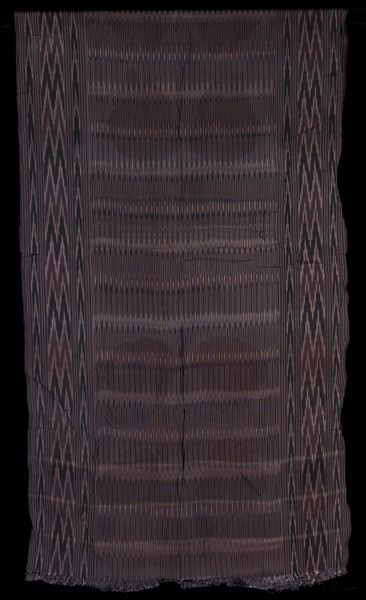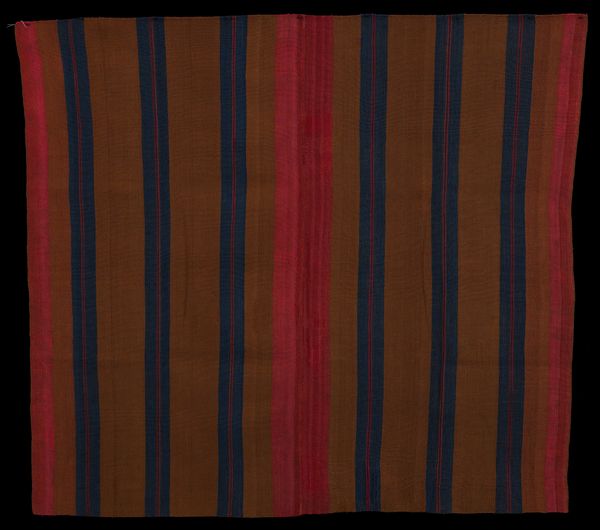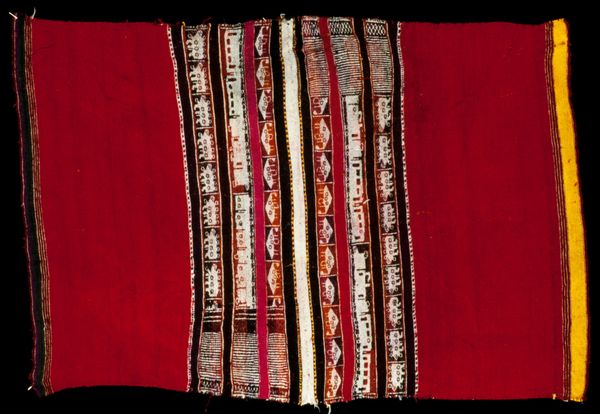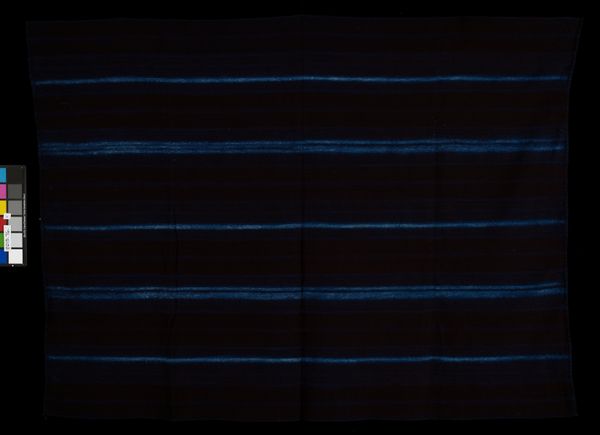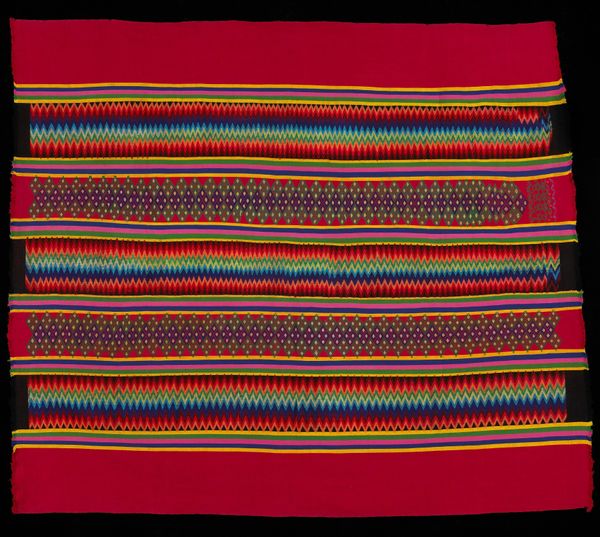
fibre-art, weaving, textile
#
tribal design
#
fibre-art
#
weaving
#
textile
#
geometric pattern
#
geometric
#
line
#
indigenous-americas
Dimensions: 29 5/8 x 60 1/4 in. (75.2 x 153.04 cm) (folded, as worn)
Copyright: Public Domain
Editor: So, this is a poncho created by the Aymara people, dating back to the 19th century. It's a cotton textile, a striking composition of red stripes on a black ground. The vertical lines are rhythmic and the colour scheme, I find, evokes a sense of solemnity. What historical narratives do you think this piece whispers? Curator: Well, this poncho speaks volumes about indigenous artistry and resistance to cultural assimilation in the Andes. Textiles weren't simply garments, but potent signifiers of identity and social status. Do you see how the regularity of the stripes and their chromatic relationship could function almost like a coded language? Editor: A coded language, that's fascinating. So, the Aymara would communicate through the patterns in the weaving? Was it a way to preserve cultural identity during periods of colonial dominance or suppression? Curator: Precisely. Consider the socio-political context of the 19th century. Indigenous communities faced increasing pressure from dominant cultures. This poncho, through its visual language, subtly declares cultural endurance. It embodies the politics of indigenous representation, even in its seemingly simple geometric design. Editor: So, it's not *just* a poncho for warmth or protection; it’s a statement. Does the choice of colours hold specific cultural meaning in this context? Curator: Yes, the specific dyes used and their intensity could reflect access to certain resources or trade networks, revealing economic realities and intercultural relationships. Furthermore, certain colours might have been reserved for particular ceremonies or social ranks. Editor: That shifts my understanding entirely. I was initially drawn to the aesthetics, but now I appreciate how profoundly connected it is to Aymara social and cultural history. Thanks for opening up a deeper appreciation of it! Curator: Absolutely! Seeing art within its historical framework truly enriches the experience. It goes beyond simple observation, doesn’t it?
Comments
No comments
Be the first to comment and join the conversation on the ultimate creative platform.
